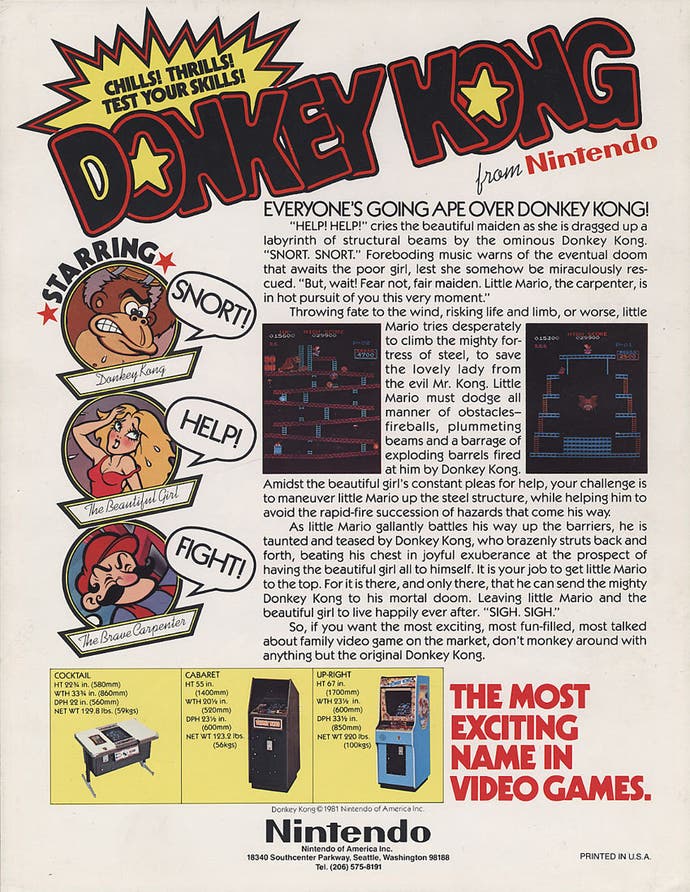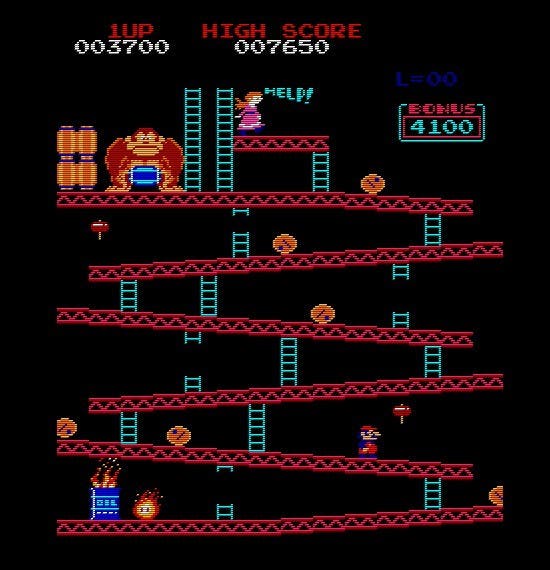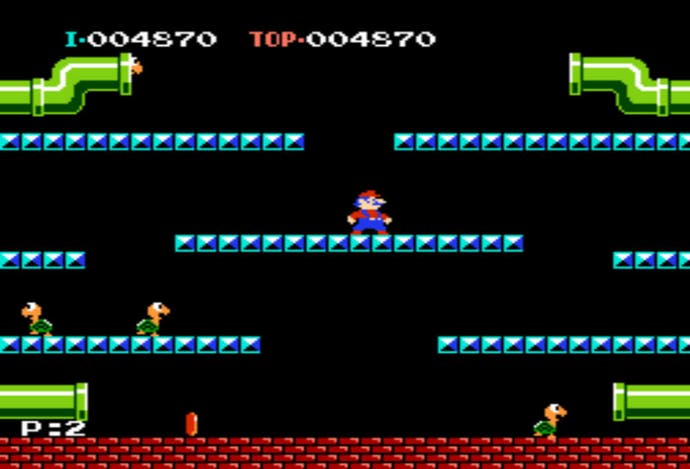The History of Mario
Twenty-five years of plumbing the heights.
Mario is over twenty five years old. Simply in terms of longevity in a constantly evolving industry, that's quite an achievement. Really, how many other characters from the dawn of gaming are still remembered, let alone starring in major AAA new releases? Is the world holding its breath for a new Pitfall Harry game? No sir, it is not. Unless you're cheeky and count Uncharted: Drake's Fortune. Hmm.
Anyway, with Super Mario Galaxy already causing well-groomed pundits to throw words like "bright, bold, unrepentantly loony" around the place this seems like a good excuse to re-rewind back to the start and take a look back of this illustrious history. For the sake of space (and my sanity) we'll be focusing on the main Mario titles, with regular diversions into some of the stranger corners he's found himself in. Spin-offs like the Yoshi and Donkey Kong series, as well as remakes and puzzle games, will be mentioned where relevant but for the most part it's the core Mario series we'll be running our calloused fingers over.
With that small disclaimer out of the way, let's journey back to the neon plastic wonderland we called 1981. Many remarkable and world-changing things debuted on the global stage in that year; Indiana Jones, Princess Diana, Bucks Fizz, that Clint Eastwood movie with the orang-utan that punches people. But it was a different sort of truculent ape that really inflamed the trousers of the entire planet, one with a fondness for throwing barrels and stealing women...
1981 to 1983 - The arcade years

Donkey Kong was his name, and he was created to help Nintendo crack the lucrative American arcade industry. Assigned to the task were two up and coming game designers - Shigeru Miyamoto and Gunpei Yokoi. In the game, a giant gorilla flees his abusive owner and kidnaps his girlfriend into the bargain. Scaling some convenient scaffolds, he jumps up and down (forming even more convenient ramps), and makes with the barrel throwing. The carpenter, going by the rather self-explanatory name of Jumpman, must ascend the scaffold, leaping over the rolling projectiles or smashing them with his hammer. The exact date when Jumpman became Mario is unclear, but certainly before 1982 rolled around the arcade cabinet was already being promoted with references to Mario, the brave carpenter. The game proved to be a hit in the arcade and a jubilant Nintendo celebrated by...er...selling the home rights to Coleco. A sequel, Donkey Kong Jr, swiftly followed in 1982 and Mario therefore spent his first year being ported to everything from the Game & Watch to the Intellivision, and even (several years later) home computers like the Apple II, Vic 20 and Commodore 64.
1983 was the year that Mario broke out from under the monkey's shadow, with the arrival in arcades of Mario Bros. This was the game that introduced Luigi, although he was simply a green-painted clone of his brother at this point, and also swapped his profession from carpenter to plumber. The game, with a basic screen layout rather obviously lifted from Joust, found the pair knocking turtles and other subterranean creatures over by bumping the platforms from beneath, before running into them to nudge them into the water. Despite the simplistic gameplay, many recurring Mario motifs could already be found. The turtles are a clear precursor to the green-shelled Koopa, while the pipes they emerge from would also become a familiar fixture in Mario landscapes. Even the pling-pling sound effect when you pick up a coin (your reward for murdering small animals) has remained fairly constant over a quarter century.

Nintendo was quick to snatch back the home rights to the moustachioed hero and with good reason - they were launching their own home console and needed flagship games to drive punters into a frenzy.
Notable Oddity: Mario's Bombs Away, a 1983 Game & Watch title which found a bizarrely militarised Mario planting explosives. The game was played by watching the action reflected in a mirror angled above the screen.
1985 to 1990 - The NES years
Mario made his debut on the NES not in a new game of his own, but by making cameo appearances in other titles. As well as the obligatory 1983 Famicom ports of Mario Bros and the Donkey Kong games in Japan, during 1984 the NES Tennis game featured his hirsute visage warming the umpire's chair, while the lead character in Golf looked bugger all like Mario, yet boasted a familiar moustache so it's probably him. Even in NES Pinball, Mario can be found hiding in the bonus stage, while those shovelling coins into the Punch Out! arcade machine may have spotted our plumbing pal watching you get leathered by Bald Bull. Much like Ronald McDonald, Mario was clearly being groomed as a corporate icon - but without the same creepy enthusiasm for saturated fat.
It wasn't until 1985 that a new standalone Mario title graced the hardware, but when it did everything changed. Super Mario Bros took the single screen collect-em-up of old and threw it out of the window, replacing the score-chasing gameplay with a side-scrolling platform adventure that tickled gamers in a way they'd never been tickled before. In fact, it could easily be argued that the distinction between arcade games and console games really began here. Prior to its release, consoles were for playing shrunken versions of arcade hits, or games that ripped off arcade hits. After Super Mario Bros, home gamers had their eyes opened to the idea that console games could be both original and free from the coin-op twitch-gaming mentality. Super Mario Bros was not only the first game to use the recognisable 2D Mario style, but it also introduced pretty much every element that has dominated the series ever since. Princess Peach (aka Princess Toadstool), Bowser, kicking the koopa shells as weapons, the classic gamespeak slogan "Our princess is in another castle", they're all here. Even fungi fun guy Toad makes an appearance, albeit anonymously.

Sorry about the "fungi" thing, by the way. Couldn't resist.
Of course, Nintendo wasn't about to alienate a market still weaned on the instant gratification of the arcade, so 1985 also saw the release of Wrecking Crew, an obscure Mario puzzle outing which took him back to his classic Donkey Kong roots by smashing every item in each ladders-and-platforms level. It's actually rather fun, and has a level designer to boot.
Here's where it gets a bit confusing. A Super Mario Bros sequel was inevitable, but we actually got two, both called Super Mario Bros 2. The Japanese version, while largely similar to the original, gave Mario and Luigi different abilities for the first time. However, depending on who you ask, the game was either too derivative of the first or too hard for western tastes, so US gamers got an entirely different game in 1988. A rebranded version of Yume Kojo: Doki Doki Panic, another Miyamoto platform game it's not without its fans but, while superficially related, is undeniably Not Mario.








